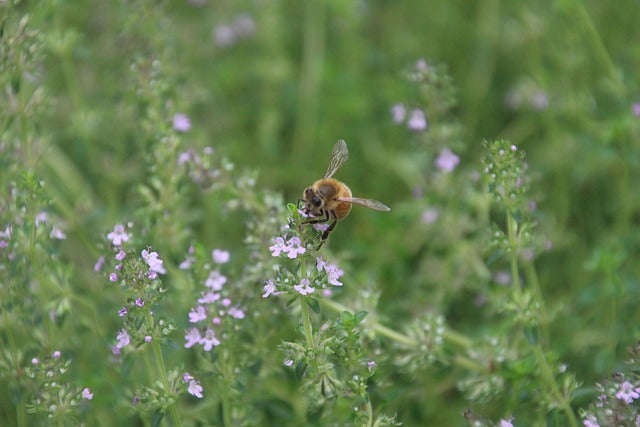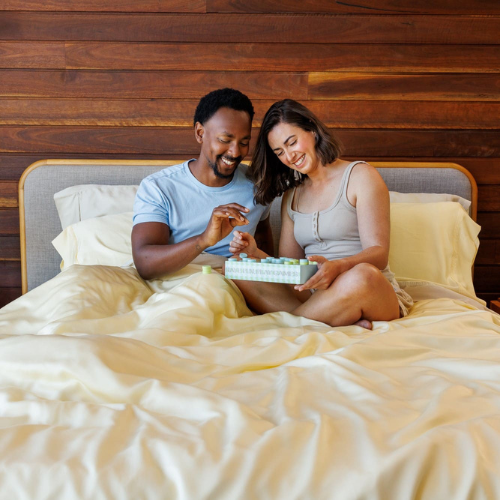by David Le Blanc
date: 08/18/2021
When planting, space the seeds as close together as possible, especially if water is extremely scarce. You will save water by doing so, and the plants will act as a natural wind barrier and shade for one another. You'll also observe fewer weeds in your garden. Apply a generous amount of mulch to your planting area to prevent water loss through evaporation. Invest in watering technologies such as drip irrigation and learn how to collect rainwater.
Here are some stunning drought tolerant shrubs and ground cover that thrive in hot, dry conditions.
Drought Tolerant Shrubs
Lavender

Throughout the growing season, lavender plants produce beautiful bluish-purple flowers. Plants in the genus Lavender have a variety of appearances. Some, for example, have thin oval leaves, whereas some others have more complex foliage. Some are tiny plants, and others form shrubs that reach a height of a few feet. Both the flowers and the silvery-green foliage of lavender are widely collected for their oils. Some dry them and use them in sachets and potpourris.
Lavender has evolved to survive in the dry and sandy soil. During the first year of your plant's life, water it regularly as this is its growing stage. However, after that, you should only water the plant when the soil gets dry. Pinch off spent blooms on a regular basis to encourage additional flowering during the growing season.
Beardtongue

In North America, there are averagely 250 species of flowering plants from this genus. They thrive in a wide range of environments, including mountains, deserts, and plains. Beardtongue plants are known for their tube-shaped blooms that grow in groups on stiff stems. Hummingbirds and bees love them, so they will always hover around your garden when you plant Beardtongue.
Once established, these plants are low-maintenance and drought-tolerant. If there hasn't been any rain in a while, you may have to water them every few weeks. They do, however, require quick drainage to prevent the roots from rotting. They can also spread vigorously under optimum conditions. If you wish to keep them from spreading, pull out some of the new shoots.
Salvia

Salvias are also known as sages. They bloom for a long time, are deer-resistant, easy to grow, and maintain. Salvias, which are native to the Mediterranean, are heat-tolerant, love full sun, and grow with little summer irrigation, making them excellent for drought-tolerant gardens and landscapes. The most beautiful salvias feature masses of brilliant blue or purple flowers that bloom all summer and attract a large number of butterflies.
Kangaroo Paw

There are only 11 species of Anigozanthos, a genus of plants that is natively found in Australia. At their base, the plants will have long green or grey-green leaves. There may also be some tall, leafless flower stalks.
Kangaroo paw plants thrive in dry, sandy environments and can withstand protracted droughts owing to the sap stored in their roots. They do, however, need a modest quantity of soil moisture to grow and flower, so if it hasn't rained in around two weeks, especially during the growing season, you may want to water it.
In the cold season, you may not have to water the Kangaroo Paw at all. However, protect your plant from strong winds and frost.
Artemisia

Artemisia is a plant genus that includes hundreds of species of hardy herbs and shrubs. Intricate leaf patterns and scented silvery-grey or white leaves are characteristic features of these plants. They pair well with succulents, decorative grasses, and other drought-tolerant plants.
When the soil begins to dry out, water your seedlings. However, once established, these plants have a high endurance for drought and hot climate. Thus, there’ll be no need to water them unless it's been a long time since the last rain. Furthermore, though most of these plants prefer full daylight, their delicate foliage needs a planting position protected from severe winds.
Geranium

Geraniums belong to the genus Pelargoniums, which are extremely hardy plants. The majority of species bloom in the late spring. Some, particularly new types like the 'Rozanne' hybrid, flourish until the beginning of the fall season.
Geraniums are mound-forming, low-growing plants that might resemble a tiny shrub in appearance. They're also a long-lived plant capable of surviving for decades. They are one of the simplest plants to cultivate from cuttings.
The majority of varieties are heat and drought-resistant. They can go for extended periods without needing water once established, but if there hasn’t been any rain in a couple of weeks, it's better to water them during the growing season. Pluck out withered flowers to encourage more blossoming later in the season.
Lantana

Lantana is a tropical plant that thrives in hot, humid environments and grows best in moist, well-draining soil. It can withstand drought conditions and blooms year-round in dense clusters of red, yellow, pink, orange, or white. This is especially beautiful in the afternoon sun. The flowers are perfect for planting around the edges of vegetable gardens because they attract butterflies, bees, and other pollinators.
Aloe

The aloe vera plant is well-known among many individuals. It is a succulent plant species from the genus Aloe which flourishes in hot, dry areas. They grow well in dry, sandy, and well-draining soil. There are various types of aloe. Drought-tolerant landscape plants include soap aloe, jewel aloe, tiger aloe, and coral aloe. Aloe plants often feature grey to brilliant green leaves. The apex may be mottled or striped, depending on the species.
Unless there has been recent rain, most aloe plants will require you to water them every other week during the warm months. However, in the cold season, both the low temperatures and rain usually supplies enough water to the plants enabling them to thrive without extra water.
If your aloe is resting in wet soil, it will shrivel and perish, so use a pot with several drainage holes. In addition, don’t water the plant if the soil still has some water. Allow it to completely dry out before watering again.
Drought Tolerant Ground Cover
Sedum

Sedums which are also called stonecrops are a type of succulent that requires very little care. They survive in hot and dry areas by storing moisture in their thick succulent leaves, resistant to drought, humidity, heat, and poor soil. These characteristics make them ideal for arid climates and rock gardens that would need a dash of flowers during the summer.
Sedum doesn't do well in wet soil. Ensure that they're in full sun and in well-draining soil.
Fountain Grass

This popular ornamental grass grows quickly, generating 3-foot tall clumps of arching, slender, purplish-red leaves. Flower spikes grow higher than the leaves in the summer, adding even more decorative value.
Fountain grass thrives well with medium soil moisture and full sun. It gets darker and glossy. However, it can also withstand moderate drought. Even so, if your area has been without rain for a few weeks, it's best to water your plant. Depending on the growing tendency of the fountain grass, it may also need to be supported.
It should also be in a wind-protected location. Because it rarely spreads its seed, the fountain grass is usually not a problem spreader in the garden.
Creeping Thyme

Creeping thyme will give you a fragrant, full-sun ground cover. You may find it interesting that walking on it is the finest way to enjoy its energizing scent. Rather than being harmed, this ground cover tolerates a moderate quantity of foot traffic. Walking on it has the added benefit of crushing the aromatic leaves just enough to release some of their lovely perfume into the air. Creeping thyme thrives in areas with plenty of sunlight.
Snow in Summer

Summer snow ground cover resembles floral snow drifts that can overflow stone walls and landscapes. And, unlike actual snow, this plant thrives in broad daylight. Early in the summer, the herbaceous perennial blooms profusely with pure white flowers. High heat and humidity make it difficult to grow, although it tolerates drought and shallow, rocky soil.
When gardening in locations with lengthy heat and dry spells, keep in mind that the winds in these locations can be very drying. Build vertical wind barriers to protect your plants from the wind and the blazing heat. You can use bamboo, trellis, or netting to create high walls. Include regions of natural and artificial shade in your growing space.
Shade-loving crops should be planted in between larger plants, trees, and shrubs. Newly planted seedlings or plants may benefit from shade nets.


























